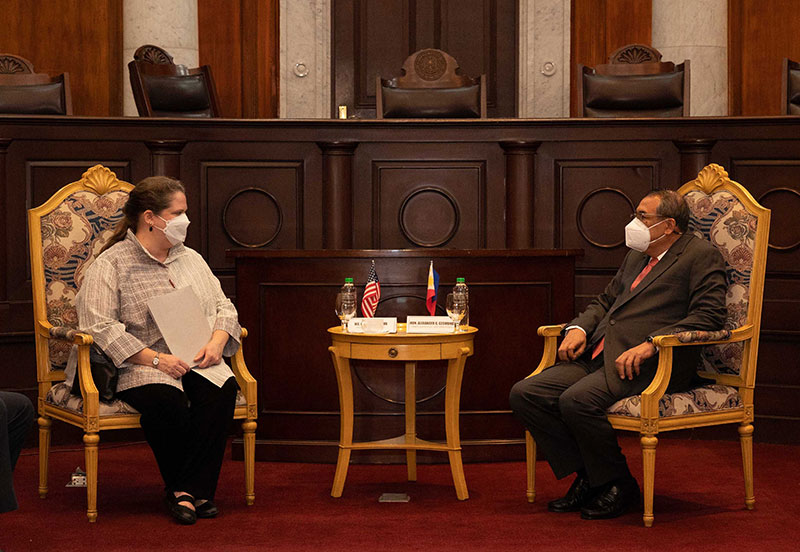
On Feb 17, 2022, U.S. Embassy in the Philippines Chargé d’Affaires (CDA) ad interim Heather Variava met with Supreme Court Chief Justice Alexander Gesmundo to discuss judicial reforms and to turn over U.S.-funded equipment to support the court’s videoconferencing needs.
The State Department’s Office of International Narcotics and Law Enforcement Affairs (INL) donated nearly Php4.2 million ($83,000) worth of equipment including nine units of videoconferencing tools, nine 55-inch TVs, a professional high-bright teleprompter, and other accessories.
The equipment will be used by the Supreme Court—and distributed to several lower courts—to support videoconferencing of hearings and to mitigate risks associated with in-person engagements during the pandemic.
The donation also includes the Training Registration and Management System, a browser-based data collection system specially programmed and designed to help the Philippine Judicial Academy manage the information and data gathered for seminars it conducts.
During the meeting, Chief Justice Gesmundo thanked the U.S. government for its continuous support, noting the videoconferencing equipment “will contribute to our collective commitment in expanding the public’s access to justice through technology.”
CDA Variava emphasized the significance of the court’s work.
“It’s clear just how important the U.S.-Philippine partnership is,” said CDA Variava.
“Technology is key to improving access to justice, increasing transparency, and protecting the rights of all people. The U.S. is proud to support these efforts and looks forward to future collaboration.”
Globally, INL provides assistance to help partner governments assess, build, reform, and sustain competent and legitimate criminal justice systems, and develop and implement the architecture necessary for cross-border law enforcement cooperation.



















